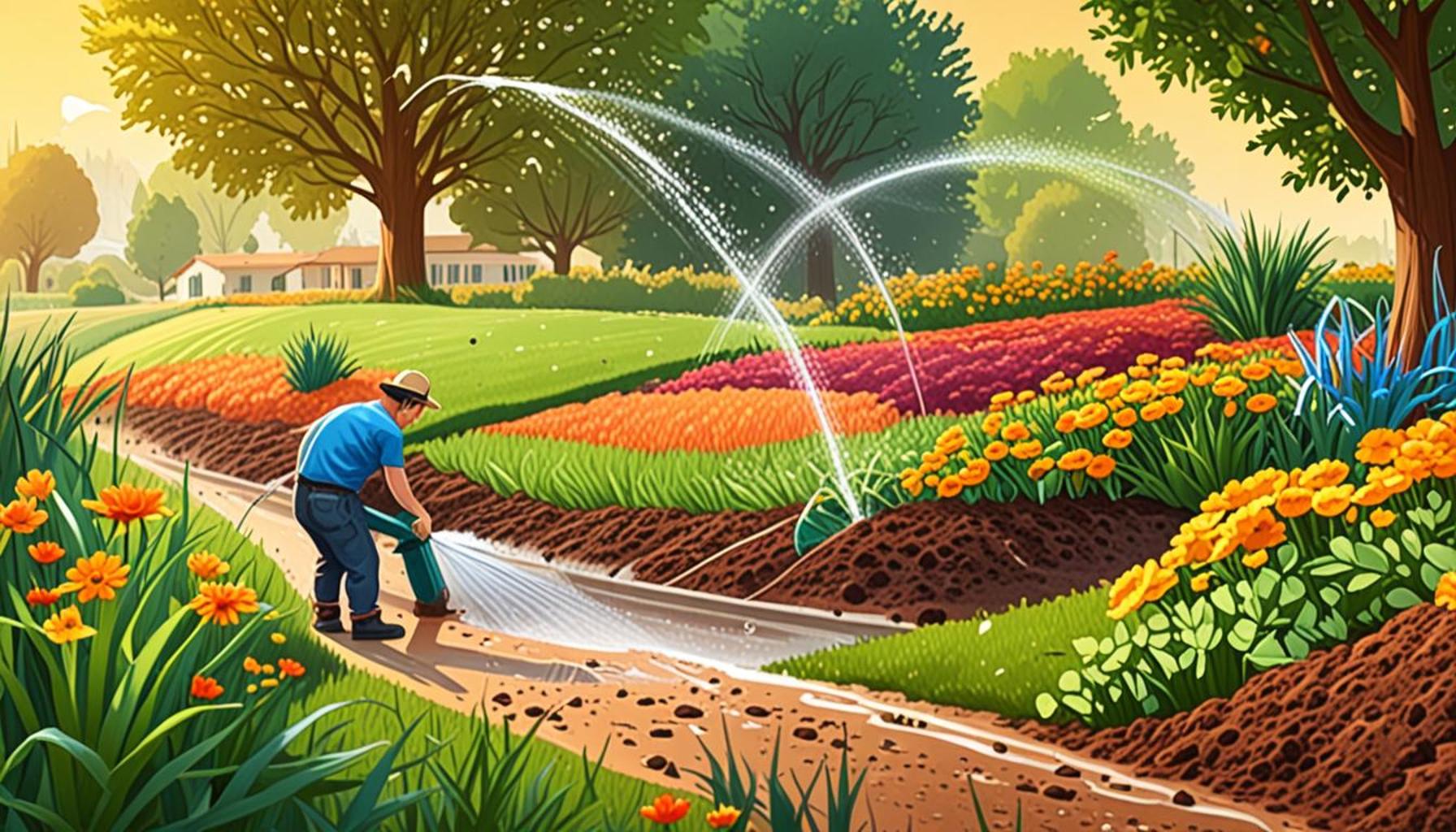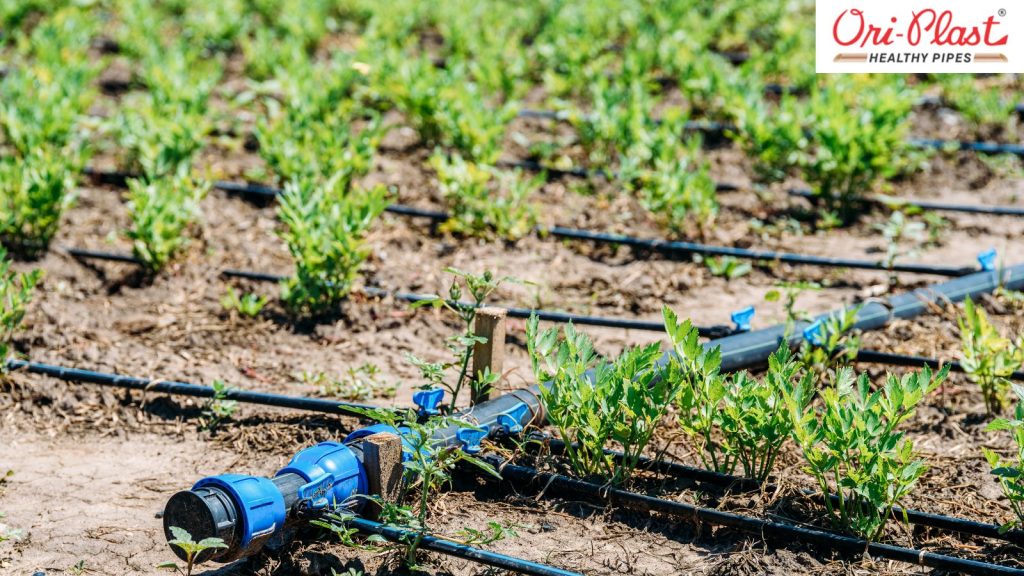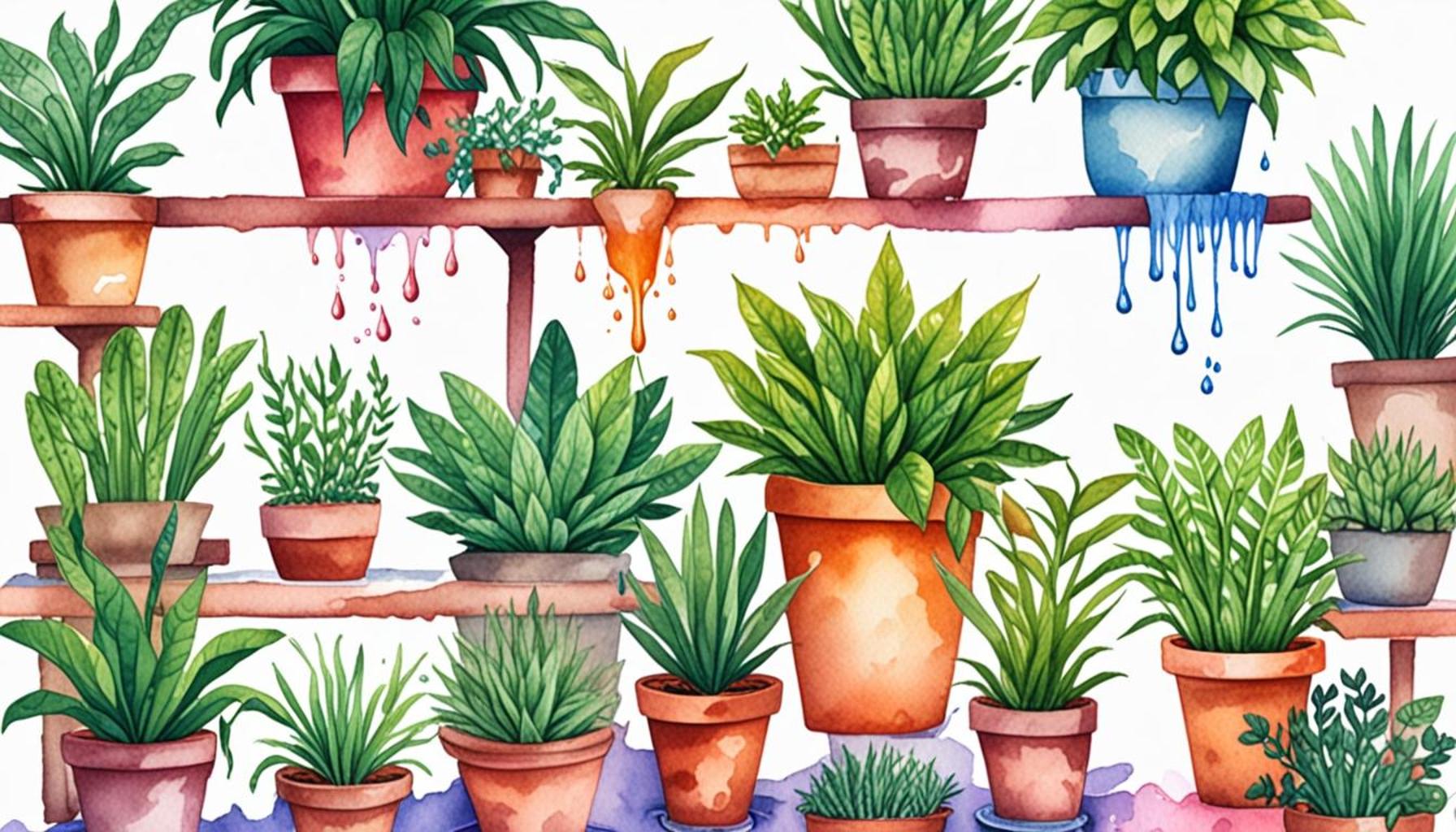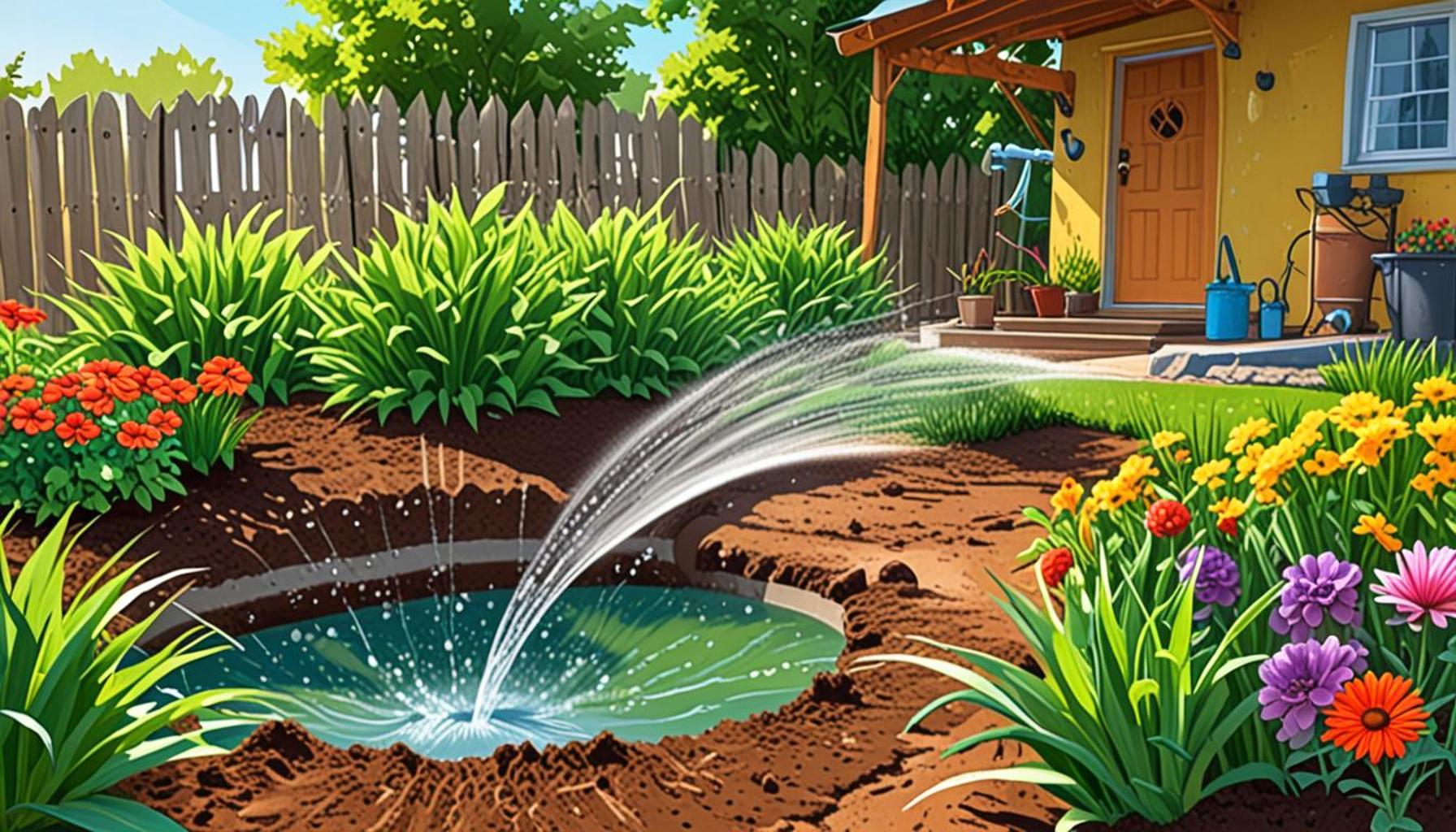How to Adapt Your Irrigation Techniques to the Seasons

Understanding Seasonal Water Demand
Seasonal changes significantly influence the demand for water in agriculture and gardening. Understanding these variations is crucial for effective irrigation management. As farmers and gardeners alike face the challenge of providing adequate moisture for their plants, adapting irrigation techniques according to the season not only conserves water but also promotes healthier plant growth. With ongoing climate change, the ability to adjust to these seasonal shifts has become even more vital.
Different seasons present unique challenges and opportunities for managing water use. With the right understanding of environmental factors, growers can optimize their irrigation strategies for each season:
- Temperature fluctuations: As summer heat intensifies, the evaporation rate in soils increases, necessitating more frequent watering. For instance, in states like California, where temperatures can soar above 100°F during the summer, implementing drip irrigation systems helps deliver water directly to the roots, minimizing evaporation and conserving moisture effectively.
- Rain patterns: Each season brings its own rain patterns. For example, areas in the Midwest often receive ample rainfall in the spring, reducing the immediate need for irrigation. However, by mid-summer, the lack of rain can lead to dry spells, prompting farmers to adjust their irrigation techniques to ensure crops receive adequate moisture.
- Soil type: The type of soil greatly affects moisture retention and drainage. Sandy soils drain quickly and may require more frequent watering, while clay soils retain water longer. Understanding your soil composition allows for tailored irrigation plans. For example, growers in Texas with sandy soil might benefit from employing moisture sensors to monitor soil hydration continuously.
Additionally, specific regions across the United States face unique climatic conditions that dictate their watering needs. For instance:
- Western states: Regions like Arizona frequently experience prolonged drought conditions, demanding the implementation of efficient irrigation systems such as smart controllers. These systems help optimize water usage based on weather forecasts, ensuring that crops receive just the right amount of water without waste.
- Midwestern states: In areas like Illinois, the spring season often brings heavy rains that can saturate the soil, which means farmers can rely more on natural precipitation in that season, requiring less supplemental watering.
- Southeastern states: States such as Florida are characterized by high humidity and heat, which necessitate precise timing and methods of watering to prevent fungal issues like mildew among plants. Gardeners may find scheduling irrigation for early mornings or late afternoons can help avoid these problems.
By grasping these elements of seasonal water demand, you can effectively tailor your irrigation techniques for better outcomes. This article aims to provide insights that will enhance your understanding of seasonal variations in water needs, ensuring sustainability and vibrant plant life throughout the year.
DISCOVER MORE: Click here for eco-friendly pest control tips

Adapting Irrigation Techniques for Optimal Plant Growth
Adaptation is key when it comes to managing irrigation techniques seasonally. As the climate shifts throughout the year, water requirements for plants fluctuate substantially, demanding varying approaches to irrigation. By fine-tuning your methods, you can not only achieve better yields but also contribute to water conservation efforts. Below, we explore tailored strategies to adjust your irrigation practices according to seasonal trends.
Spring: Maximizing Natural Precipitation
Spring often heralds a season of rejuvenation, marked by increased rainfall in various regions. Farm and garden owners should adopt a cautious approach to irrigation during this time, capitalizing on the natural precipitation available. Utilizing rain gauges can help determine how much rain has fallen and how much additional watering might be necessary. In fact, many growers in the Northeast report a significant reduction in irrigation needs during spring months due to the plentiful rains that often accumulate over March and April.
- Adjusting sprinkler systems: Consider programming your sprinkler systems to operate less frequently. You can set timers that respond to predictable rain events or rely on weather monitoring apps that provide updates, allowing you to save water and prevent overwatering your plants.
- Soil testing: Early spring is a perfect time for a comprehensive soil test. It will provide key insights into nutrient levels, which can inform your irrigation strategy. Understanding your soil’s moisture retention capabilities allows you to apply the right amount of supplemental watering.
Summer: Combatting Heat and Drought
As summer arrives, the landscape often transforms into a more challenging environment for plant survival, demanding thoughtful irrigation adaptations. Extreme heat and sporadic rainfall can lead to rapid drying of soil, which puts stress on crops and garden plants.
- Drip irrigation systems: One effective technique for combating summer heat is implementing drip irrigation systems. This method delivers water directly to the roots, minimizing evaporation and ensuring that every drop counts. It’s particularly advantageous for drought-prone areas such as California, where water conservation is a top priority.
- Mulching: Applying organic or inorganic mulch helps retain moisture in the soil and reduces temperature fluctuations. This technique is beneficial during summer months when the sun can quickly evaporate surface water, leading to stressed plants.
- Timing your watering: Timing is crucial in summer irrigation; watering either in the early morning or late evening takes advantage of cooler temperatures, which reduces evaporation losses and allows more water to soak into the ground.
Autumn: Preparing for Dormancy
As the growing season winds down and autumn sets in, it’s essential to adjust irrigation techniques with the understanding that plants are transitioning towards dormancy. During this season, the focus shifts from vigorous growth to establishing adequate moisture levels to help plants survive winter.
- Gradual reduction: Begin to taper off watering routines, allowing for reduced moisture needs as temperatures drop and plants naturally slow their growth. This gradual approach helps the plants transition smoothly into dormancy without shock.
- Cover crops: Employing cover crops in the fall can improve soil structure and retain moisture, preparing your soil for the upcoming planting season while safeguarding against erosion.
By understanding the seasonal adjustments required for effective irrigation, farmers and gardeners can ensure that their plants thrive year-round. Adopting these tailored strategies can enhance both sustainability and productivity, ultimately leading to better harvests and a healthier ecosystem.
When it comes to optimizing your irrigation methods to coincide with seasonal changes, understanding the unique water requirements of your plants throughout the year is crucial. During the hot summer months, for instance, plants generally require increased moisture, which may necessitate more frequent watering sessions. This is the perfect time to utilize drip irrigation systems, as they deliver water directly to the root zones, reducing evaporation loss and ensuring efficient water usage. Additionally, assessing the soil’s ability to retain moisture becomes vital; soil amendments such as mulch can aid in maintaining adequate moisture levels.
As autumn approaches, the need for water typically decreases as temperatures drop, and plants enter a period of dormancy. Adjusting your irrigation schedule during this transition is essential to prevent over-watering, which can lead to root rot. This is an ideal time to employ rainwater harvesting, collecting precious rainwater for later use during dry spells. This not only conserves water but also reduces your utility bills.
Winter brings its own set of challenges as freezing temperatures can damage irrigation lines. Winterizing your irrigation system, such as draining the pipes and insulating exposed sections, is key to preserving your equipment. Also, considering the water needs of evergreens and dormant plants can help reduce water waste.
Finally, spring signals a new growth phase, wherein plants will gradually require more water as they revive. At this stage, it is beneficial to monitor rain forecasts closely, allowing for more sustainable water management. Adapting your irrigation techniques to the seasonal changes ensures optimal plant health and resource conservation, making your gardening endeavors successful year-round.
| Advantages | Details |
|---|---|
| Efficient Water Management | Using seasonal adjustments can lead to smarter water usage, conserving resources. |
| Enhanced Plant Health | Tailored irrigation techniques support optimal growth and reduce plant stress. |
DIVE DEEPER: Click here to learn more
Winter: Protecting Your Investment and Conserving Water
As winter approaches, the landscape undergoes a significant transformation, with many plants entering a dormant stage. This season presents a unique set of challenges for irrigation management, requiring a strategic approach to conserve water while preparing for the challenges of colder months.
Watering Frequency and Techniques
During winter, the moisture requirements of plants are markedly decreased, making it crucial to adjust your irrigation schedules. Soil temperatures tend to drop, reducing evaporation rates and prolonging moisture retention.
- Reduce watering: In most regions, you should significantly decrease your irrigation frequency during winter. Many established plants only require a deep watering every 3 to 4 weeks, especially if there are no significant rainfall events. This careful adjustment helps prevent excess moisture that can lead to root rot in cold soil conditions.
- Utilize winter irrigation: In certain regions, especially in the southern United States, occasional mild spells can trick plants into thinking spring has arrived. During these warm spells, an occasional irrigation may be necessary to keep trees and shrubs hydrated. Be vigilant and utilize a moisture meter to gauge soil conditions before watering.
Protecting Plant Health
The combination of cold temperatures, frost, and variable weather patterns poses risks to plants. It is essential to employ specific watering techniques that not only nurture but also protect plant health.
- Winterizing irrigation systems: Before temperatures plunge, you should winterize your irrigation system. This process prevents pipes from freezing and bursting, saving you repair costs. Deplete the system of water, insulate exposed pipes, and consider draining drip lines to safeguard against winter elements.
- Deep watering: While watering frequency decreases, ensuring that your plants are adequately hydrated before winter is vital. Implement deep watering techniques when temperatures are above freezing to allow water uptake while avoiding surface runoff.
Consideration of Frost and Snow
In many areas, snow can act as a natural form of insulation and moisture for the soil. However, understanding how to interpret snowfall is essential for your irrigation strategy.
- Snow as insulation: The snow that accumulates serves as protection for plant roots, maintaining a consistent soil temperature. This insulation can mitigate the risks of frost damage, and your plants should be fine without supplemental moisture until spring melt. However, if you live in climates with light or sporadic snowfall, be prepared to adjust your irrigation accordingly.
- Monitoring moisture levels: Even during winter, monitor your soil moisture levels. You can utilize moisture meters or simply dig down a few inches to assess the dampness of the soil. Adjusting your watering techniques based on actual soil conditions rather than calendar dates is vital.
By closely observing seasonal trends and adapting your irrigation techniques accordingly, you can conserve water and protect your crops through winter. Each seasonal transition presents opportunities to optimize your practices, ensuring that your plants remain healthy and productive throughout the year.
DON’T MISS OUT: Click here to discover the best time to harvest your veggies
Embracing Seasonal Adaptation for Optimal Irrigation
In the dynamic realm of gardening and agriculture, understanding the art of adapting your irrigation techniques to the seasons is crucial for protecting your investments and enhancing plant health. As we’ve explored throughout this article, each season brings unique challenges and opportunities that demand flexibility and observation. From the abundant growth of spring, the heat of summer, the transition during fall, to the dormancy of winter, knowing how to adjust your irrigation practices helps conserve water while ensuring the vitality of your plants.
In the spring, tapping into the revitalizing potential of rainfall and adjusting your watering schedules can lead to thriving gardens. Summer requires a more diligent approach, focusing on efficient watering methods that support plant hydration without waste. Fall’s transition serves as a reminder to prepare your landscape for dormancy, adjusting your approach to support root health. Lastly, winter emphasizes the importance of reduced watering and protective measures against the elements.
Taking these insights into account, not only will you foster a more sustainable approach to irrigation but also cultivate an environment where plants can flourish throughout the seasons. Continuous monitoring and using tools like moisture meters ensure that your techniques are effective and responsive to the evolving climate conditions.
As you embrace these seasonal adaptations, you’ll discover that effective irrigation is not just a task; it’s a strategy for success. Equip yourself with knowledge, remain vigilant, and your plants will reward you with abundance year-round.



